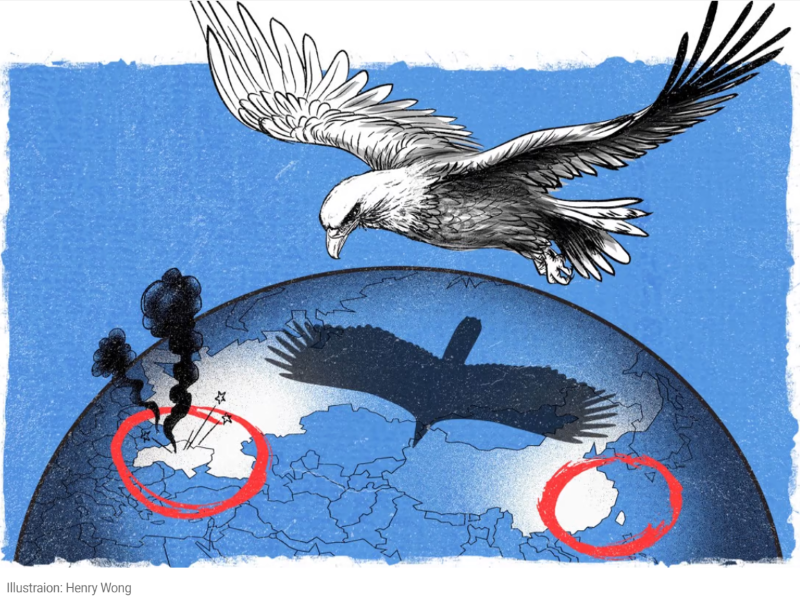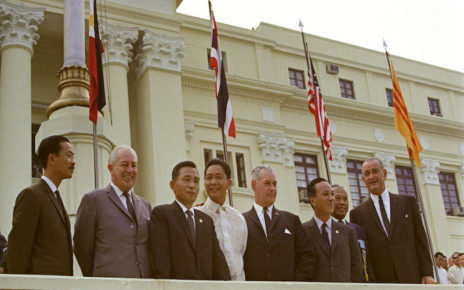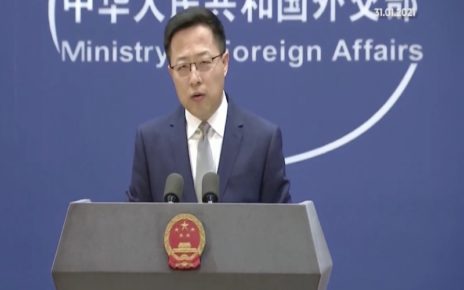In a rapidly shifting geopolitical order experiencing deepening multipolarity and the renewal of hard power politics, the recent war in Ukraine has become the focal point for how lower-tier powers can combat and defend themselves from an aggressive, revanchist, and revisionist power.
Although the war in Ukraine has reignited intra-alliance unity and purpose among NATO members, the conflict has also prompted Taiwan, the small island state in the Indo-Pacific, to re-examine its military capabilities and posture towards China. Moreover, the Russo-Ukraine war has prompted NATO to look toward its extra-regional likeminded partners in the Indo-Pacific, as seen in its invitation to Australia, Japan, New Zealand, and South Korea to attend the Madrid NATO Summit on June 29, 2022.
Growing interconnectedness between Russia and China, two autocratic-authoritarian powers that have exhibited a desire to overturn the post-Cold War rules-based order, has stoked concerns over whether China will execute a strategy to invade Taiwan in the near future through armed force, similar to what Russia is doing in Ukraine.
Leaders, pundits, and analysts in NATO, the US, and Western security circles often likened Ukraine and Taiwan’s security and defence environments to one another. After all, Ukraine and Taiwan are lower-tier powers neighboured by two global powers. What is more, the political leadership in Russia and China view the independent territorial, political and cultural identity—indeed the very existence—of their respective neighbours as illegitimate, seeing them as part of their own nations, with Putin arguing that Ukraine was created by Russia and Xi Jinping reinforcing Beijing’s decades-long view of Taiwan as an inalienable part of the People’s Republic of China.
The West also likes to showcase Taiwan and Ukraine as junior democratic states that have renounced their autocratic and authoritarian pasts, fitting within the emerging struggle between status quo and revisionist states competing to fundamentally preserve or reshape the global order respectively; the latter, headed by a Beijing-Moscow autocratic-authoritarian alliance, constitute the “threat to democracy”.
Other similarities between Ukraine and Taiwan relate to Russia’s and China’s possession of large-scale conventional militaries, sizeable nuclear capabilities, and unconventional infrastructure for cyberattacks and misinformation campaigns. In response, Taiwan and Ukraine have welcomed the security and defence benefits of embracing military support from the US, often in weapon procurements and training programs.
With such parallels, Western leaders and analysts have taken the Ukrainian military’s accomplishment of resisting Putin’s initial invasion through the use of asymmetric warfare as the strategic template for Taiwan to use against a possible armed attack by China. In addition, liberal democratic, likeminded partners sanctioning Putin and Russian oligarchs, along with removing Russia’s access to the SWIFT global financial system, is being trumpeted as a successful deterrence mechanism that could be used against China if it invades Taiwan.
Despite these commonalities, the dissimilarities between Taiwan and Ukraine pose challenges for NATO and its members in potentially aiding Taiwan and deterring China. These consequential differences range from variation in the military proficiency of Ukraine and Taiwan to execute an effective defensive strategy for their sovereign territories, to unequal abilities in garnering global diplomatic recognition, to their differing capacities to compete against an adversary’s conventional and unconventional capabilities. Moreover, China’s ability to endure Western sanctions as the economic hegemon of the Indo-Pacific and the global exporter of critical materials to Western countries will prompt middle powers in the Indo-Pacific and abroad to hedge their bets in the event of conflict, thereby potentially preventing a united bloc of peer-states from applying economic sanctions on China in the event of its invasion of Taiwan.
The most substantial of these discrepancies between Ukraine and Taiwan is their geographical surroundings. Ukraine, for instance, is a landlocked state with a southern maritime periphery and is neighboured by various states that are militarily connected through a long-standing alliance system in NATO and politically and economically bound through the European Union. On the other hand, Taiwan is a small island state surrounded by water and very close to China and is not widely recognized as a legitimate state actor, having formal diplomatic relations with only 14 countries—none of which are NATO countries.
Taiwan’s geographical disparity with Ukraine should be a red flag for NATO leaders and analysts shaping strategies that anticipate how the Alliance could militarily respond in a maritime armed conflict with China over Taiwan, if it were called upon to do so. A major hurdle is the island’s topography, a geosecurity feature that will make arms procurement from NATO members all but impossible if China conducts a multifaceted maritime operation (MMO) that includes an aerial and naval blockade of the island, heavy missile barrage from the air and sea, and an invasion of the island.
A contributing factor in the successful Ukrainian resistance against Putin’s initial invasion was the unrestricted Western border that Ukraine shares with NATO and the EU which allows for the transfer of sustainable ammunition deliveries, defensive systems, and other logistical items to the Ukrainian military. Moreover, NATO’s conventional ground warfare planning positioned the Alliance to anticipate and implement supporting logistical operations. If China initiates an MMO, which is a growing likelihood, then NATO will be unprepared and ill-suited to supply weapons and capabilities to Taiwan, making the island state fight with the weapons and assets it already possesses.
Lastly, there is no regional alliance to act as a deterrent in the Indo-Pacific. An enabling factor that allows European states that closely neighbour Russia and that have legitimate territorial fears of Russian aggression—like the Baltics and Eastern Europe—to supply Ukraine with military assets is NATO and its collective security guarantee enshrined in Article V of the Washington Treaty. The reassurance of NATO’s major powers coming to the aid of smaller members prevents Russia from tactically targeting the direct routes that these smaller NATO members use to supply Ukraine with military assets.
For Taiwan, there are no NATO-like alliances in the Indo-Pacific other than the US’s bilateral and minilateral hub-and-spoke systems. As such, it is unlikely that prominent regional middle powers, like Vietnam, Indonesia, Singapore, Malaysia, and Thailand, will provide Taiwan with military aid in the face of Chinese retaliation. Taiwan cannot also depend on the US due to its strategic ambiguity policy, an outlook that can sharply change due to American political polarization. Furthermore, any routes to Taiwan will be staunchly blocked by the People’s Liberation Army Navy (PLAN), the world’s largest navy.
If NATO is serious about expanding its extra-regional presence and checking the erosion of a rules-based order to revisionist and revanchist powers like China and Russia, it will need to engage the Indo-Pacific and Taiwan differently. Further, the Alliance should not assume that its experience in helping Ukraine will suit its extra-regional strategies to provide aid to like-minded partners in an out-of-area operation. Instead, NATO should take the lessons from Ukraine, particularly the Alliance’s agility to move vital weapons, defence systems, and key logistical items to a state under proposed or direct threat and modulate them for a distinctly maritime conflict.
Photo: Russia-Ukraine War’s Impact in Taiwan (2022), by Henry Wong via ChinaUSFocus Public Domain.
Disclaimer: Any views or opinions expressed in articles are solely those of the authors and do not necessarily represent the views of the NATO Association of Canada.




